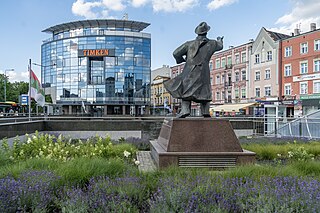
Sosnowiec is an industrial city county in the Dąbrowa Basin of southern Poland, in the Silesian Voivodeship, which is also part of the Metropolis GZM municipal association. Located in the eastern part of the Upper Silesian Industrial Region, Sosnowiec is one of the cities of the Katowice urban area, which is a conurbation with the overall population of 2.7 million people; as well as the greater Katowice-Ostrava metropolitan area populated by about 5.3 million people. The population of the city is 189,178 as of December 2022.
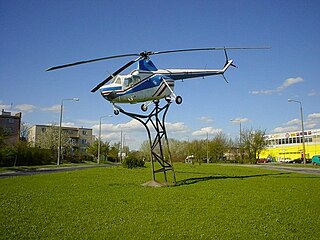
Świdnik is a town in southeastern Poland with 40,186 inhabitants (2012), situated in the Lublin Voivodeship, 10 kilometres southeast of the city of Lublin. It is the capital of Świdnik County. Świdnik belongs to the historic province of Lesser Poland, and was first mentioned in historical records in the year 1392. It remained a village until the end of the 19th century when it began to develop as a spa, due to its location and climate.
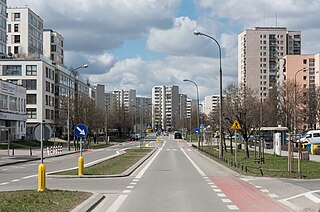
Ursynów is the southernmost district of Warsaw. With a surface area of 43.7 km2 (16.9 sq mi), it is the third largest district in Warsaw, comprising 8.6% of the city. The district has a population of over 150,000, and is one of the fastest-growing neighbourhoods in Warsaw. Nearly 25% of its inhabitants are below 18 years of age.
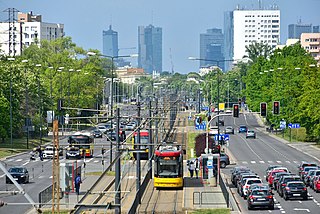
Mokotów is a city quarter of Warsaw, the capital of Poland. It is densely populated, and hosts many companies and foreign embassies. Only a small part of the district is lightly industrialised, while the majority is full of parks and green areas.

Wilanów is a district of the city of Warsaw, Poland. It is home to historic Wilanów Palace, the "Polish Versailles," and second home to various Polish kings. Wilanów is home to many villas and, despite being relatively far away from the city center, the district ranks among the most expensive in Warsaw.

Praga-Południe, also known by its anglicized names Praga-South, Praga South, and South Praga, is a district of the city of Warsaw, Poland located on the east bank of the Vistula River. It consists of Grochów, Gocław, Kamionek and Saska Kępa.
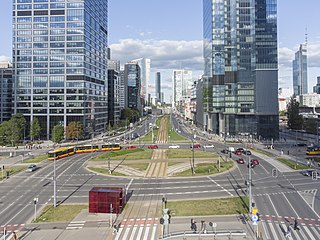
Wola is a district in western Warsaw, Poland. An industrial area with traditions reaching back to the early 19th century, it underwent a transformation into a major financial district, featuring various landmarks and some of the tallest office buildings in the city.

Bemowo is a district of Warsaw located in the western part of the city. Its territory covers the western belt of the former district of Wola, which was incorporated to Warsaw in the year 1951. The name of the district derives from the surname of General Józef Bem.
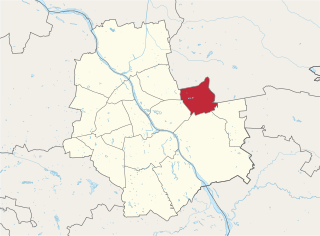
Rembertów is a district of the city of Warsaw, the capital of Poland. Between 1939 and 1957 Rembertów was a separate town, after which it was incorporated as part of the borough of Praga-Południe. Between 1994 and 2002 it formed a separate commune of Warszawa-Rembertów. In the 1940s it was a site of a prison operated first by Nazis and then by Soviets.
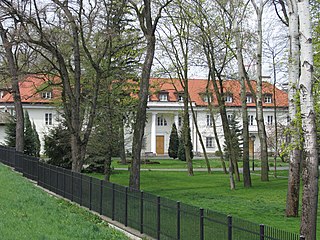
Białołęka is one of 18 districts of Warsaw, located in the northern part of the city. Until October 27, 2002 Białołęka was a gmina.

Bielany is a district in Warsaw located in the north-western part of the city.
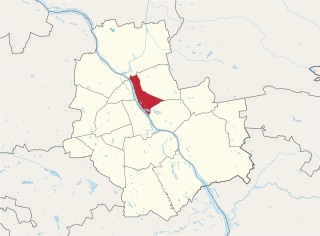
Praga-North, also known as North Praga, Praga North, is a district of the city of Warsaw, Poland, located in the central part of the city.
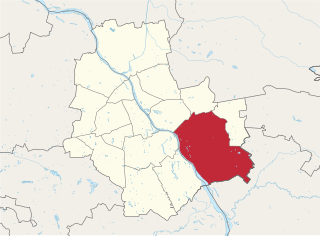
Wawer is one of the districts of Warsaw, located in the south-eastern part of the city. The Vistula river runs along its western border. Wawer became a district of Warsaw on 27 October 2002.

Włochy is one of the districts of Warsaw, located in the south-western part of city. Włochy borders districts Bemowo and Wola from the north, Ochota and Mokotów from the east, and Ursus and Ursynów from the south. It is one of 3 neighborhoods with the title of a garden town.

Wesoła is one of the districts of Warsaw, and has been as such since October 27, 2002. Wesoła is located in the south-eastern part of city.

The June 1976 protests were a series of protests and demonstrations in the Polish People's Republic that took place after Prime Minister Piotr Jaroszewicz revealed the plan for a sudden increase in the price of many basic commodities, particularly food. Prices in Poland were at that time fixed, and controlled by the government, which was falling into increasing debt.

Ursus SA was a Polish agricultural machinery manufacturer, headquartered in Lublin, Poland. The company was founded in Warsaw in 1893, and holds a prominent place in Polish tractor production history. It has also carried out some production of trolleybuses in a joint venture with the Ukrainian manufacturer Bogdan, and manufactures buses, coaches, and trolleybuses in a joint venture with Polish manufacturer AMZ Kutno under the name Ursus Bus.
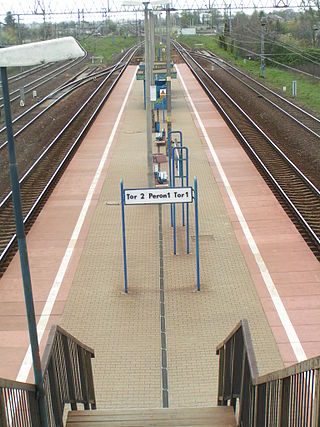
Warszawa Gołąbki railway station is a railway station in the Ursus district of Warsaw, Poland. The station is served by Koleje Mazowieckie, who run trains from Kutno to Warszawa Wschodnia.

Niedźwiadek is a residential neighbourhood built between 1968 and 1978 under the official name Spółdzielcze Osiedle Mieszkaniowe "Niedźwiadek"; since 2003, it also is the name of an area in City Information System. Both are part of Ursus district, Warsaw, Poland.

Gmina Jastarnia is an urban and rural municipality in Pomeranian Voivodeship, Poland, within Puck County, on the Hel Peninsula. Its seat of government is in the town of Jastarnia. It has an area of 7.8 km2, and in 2021, it had a population of 3,554 people.























